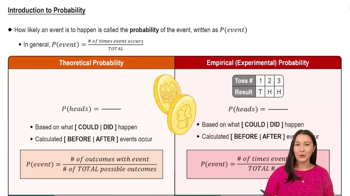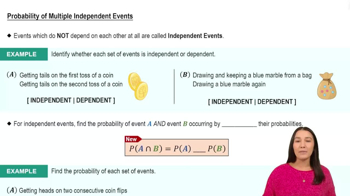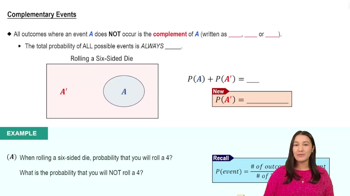Here are the essential concepts you must grasp in order to answer the question correctly.
Probability
Probability is a measure of the likelihood that an event will occur, expressed as a number between 0 and 1. In this context, it involves calculating the chance of selecting a person who is either female or does not work from home from the total sample. Understanding how to compute probabilities using the total number of favorable outcomes divided by the total number of possible outcomes is essential.
Recommended video:
Introduction to Probability
Union of Events
The union of events refers to the occurrence of at least one of the events in question. In this case, we are interested in the event where a person is either female or does not work from home. The probability of the union can be calculated using the formula P(A ∪ B) = P(A) + P(B) - P(A ∩ B), which accounts for any overlap between the two events.
Recommended video:
Probability of Multiple Independent Events
Complementary Events
Complementary events are pairs of outcomes where one event occurs if and only if the other does not. In this scenario, understanding the complement of the event 'does not work from home' can simplify calculations. For instance, if we know the probability of working from home, we can easily find the probability of not working from home by subtracting from 1.
Recommended video:







